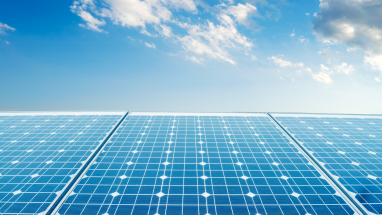
Building integrated photovoltaics – architecturally integrated photovoltaic systems – involves designing innovative solutions to integrate devices that convert solar energy into electrical energy directly within buildings.
This field is the focus of an Italian team that includes researchers from the National Research Council’s Institute of Structure of Matter (ISM) in Milan, the University of Milano-Bicocca and the Glass to Power company: together, they have developed an innovative material characterised by its low environmental impact and high efficiency for the creation of luminescent solar concentrators (LSCs).
The study is published in the Joule - Cell Press journal: the project combines a simple design with a low construction cost, using a material that requires synthesis processes with a reduced environmental impact, while making it possible to achieve state-of-the-art solar energy conversion performance for this type of application.
“Its operation is based on an intrinsic property of many classes of organic molecules, namely the ability to absorb solar radiation over a broad spectrum of wavelengths and to re-emit it with high efficiency at a different and well-separated wavelength,” explains Giuseppe Mattioli (CNR-ISM). “Molecules that possess these characteristics and that are highly stable in contact with heat and light are dispersed inside Plexiglas sheets for windows: solar radiation is absorbed and then re-emitted by the molecules, and the sheet provides the most economical ‘wave guide’ to trap the radiation and channel it to the edges.”
These sheets are mounted in normal window frames in which slim, invisible photovoltaic cells convert concentrated light radiation into electrical energy. “The main advantage of this innovation is the use of molecules that require simple and fast synthesis, free of process solvents and therefore ‘eco-friendly’. The material is exclusively manufactured with mechanochemical techniques: the reagents are mixed dry in a vibromixer (known in industry as a ‘ball miller’), which guarantees high yields with low contact times even without the use of solvent, with a weight ratio between waste and product (E factor, one of the most common sustainability indicators in organic synthesis) that is around 50 times lower than that associated with other molecules of comparable efficiency,” adds Luca Beverina of the University of Milan-Bicocca.
And these are not the only benefits: “Unlike the photovoltaic panels used so far – which are opaque and dark, or semi-transparent – this system makes it possible to create transparent sheets, offering both aesthetic and functional benefits,” continues Mattioli. “Finally, the device’s operating makes it possible to overcome current positioning constraints, which at present are particularly strict in terms of tilt angle and orientation relative to the sun. Photovoltaic devices based on luminescent solar concentrators are, in this context, an irreplaceable complement to conventional systems.”